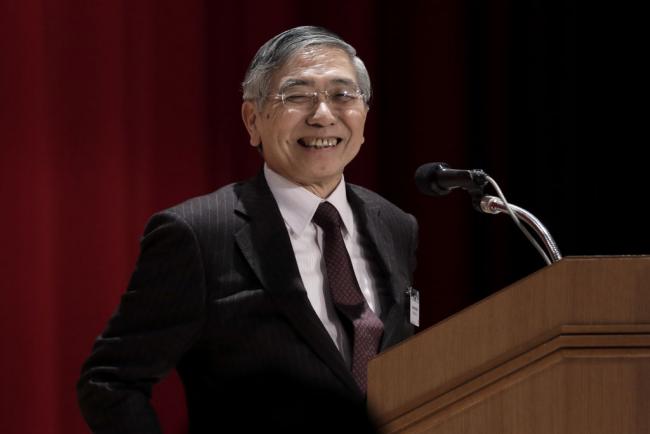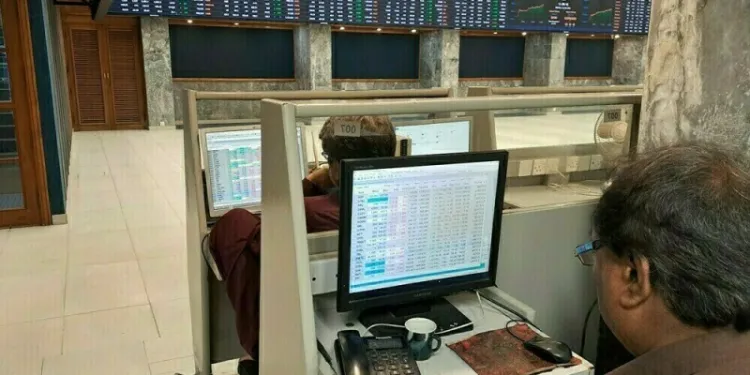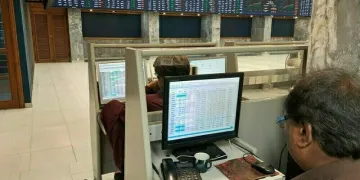 © Bloomberg. Haruhiko Kuroda, governor of the Bank of Japan (BOJ), reacts at the Paris Europlace International Financial Forum in Tokyo, Japan, on Monday, Dec. 4, 2017. The BOJs yield-curve control program has been
© Bloomberg. Haruhiko Kuroda, governor of the Bank of Japan (BOJ), reacts at the Paris Europlace International Financial Forum in Tokyo, Japan, on Monday, Dec. 4, 2017. The BOJs yield-curve control program has been (Bloomberg View) — This is going to be an exciting year for monetary policy. In fact, it already is, thanks to Europe and Japan.
Investors were taken aback last week when the Bank of Japan bought fewer bonds and the European Central Bank revealed — shock, horror — its language would have to evolve with the euro region’s economy. Both developments, and the reaction, were welcome. They say a lot about the strength of global growth and how it still surprises many people.
First to Japan: Investors were wrong to interpret the reduced purchases as a sign that a policy shift is imminent. They were, however, right about the long-term direction of policy. It isn’t going to get looser. Will it remain accommodative as far as the eye can see? Yes. With Japan’s economic sunny patch extending and inflation headed in the right direction — if still way too low — it’s not a stretch to see Governor Haruhiko Kuroda or his successor ease up a little on the stimulus. Just not right now.
That was Jan. 9. Two days later, the fever struck in Europe. The proximate cause was the release of minutes from the ECB’s December meeting and the implication contained therein that communications would have to reflect a stronger growth terrain and improving, albeit still low, inflation.
The euro jumped and German bond yields climbed. It feels like we just got through a big change from the ECB: the taper of bond purchases to 30 billion euros a month until September. (Remember when officials hated the word “taper”?) Now, here were policymakers flagging further revisions.
What’s the thread linking these two happenings? Despite all the data and pronouncements about a robust global economy and a synchronized upswing, people are still taken aback by signs that (a) it’s a reality and (b) policy is bound to react.
I’m not saying policy is going to change overnight. But if you start with a global framework — we are in a global marketplace, are we not? — key to that framework really ought to be the direction of policy. Ask yourself: Are monetary chieftains going to make policy more easy or less easy, assuming the upswing in growth is sustainable? The answer has to be “less.”
Still, skepticism abounds. For years, central banks were too optimistic in their forecasts. That really hasn’t been the case in the past 12 months. When it comes to Europe and Japan, let’s throw in some ideological bias. Some observers will always equate these two economies with stagnation, sclerosis and decline. While they have long-term challenges, to simply write them off misses a lot of opportunities.
The next potential flashpoint is the Jan. 25 meeting of the ECB’s governing council. It’s too soon to expect a shift in communications then, but individual council members are off and running. Some, like Vice President Vitor Constancio, argue that investors are getting ahead of themselves and point to inflation below target. Bundesbank President Jens Weidmann and Estonia’s Ardo Hansson seek a more aggressive approach.
Perhaps the person with the shrewdest stance is Bank of France Governor Francois Villeroy de Galhau. “We are predictable as to the direction of our policy and the sequencing,” he said this week. “But we are not pre-committed in terms of precise timing. We will make this contingent on the actual progress made in achieving our inflation objective.”
There is something in this language for everyone. Let’s not lose sight of the big picture and not mistake his first sentence for throat clearing. It’s all about direction.
Villeroy could have been speaking about the world as a whole. There is more going on in the arena of central banking than a changing of the guard atop the Federal Reserve.
This column does not necessarily reflect the opinion of the editorial board or Bloomberg LP and its owners.
Daniel Moss writes and edits articles on economics for Bloomberg View. Previously he was executive editor of Bloomberg News for global economics, and has led teams in Asia, Europe and North America.
Source: Investing.com



























